What is Fraud Detection? What’s the Best Strategy for Identifying & Stopping Fraudsters?
Here’s a startling statistic: card-not-present channels now account for roughly 80% of all fraudulent transactions in the US.
Investing in resources to detect fraud is an absolute necessity for any business that accepts and processes card-not-present transactions. But, to meet this challenge, you need to craft a comprehensive game plan.
What kind of fraud detection strategy is right for your business? What exactly should it entail? And, should you build your own in-house solution or hire a fraud detection service to handle the heavy lifting? We’ll cover all that and more below. First, though, let’s outline what exactly we’re talking about.
Recommended reading
- What is Mastercard SecureCode? Here’s How it Works
- The Top 10 Fraud Detection Tools You Need to Have in 2025
- ECI Indicators: How to Understand 3DS Response Codes
- How to Detect Fraud: Top 20 Tips to Stop eCommerce Scams
- Reverse Email Lookup: Tips, Tools & How to Detect Fraud
- Top 20 Fraud Red Flags All Merchants Should Know in 2025
What is Fraud Detection?
In a payments context, “fraud detection” is an umbrella term for the actions, technology, and processes used to identify fraudulent activity. Encompassing more than simple one-time-prevention methods, a successful fraud detection strategy will help you identify trends, patterns, and flaws in your current fraud prevention efforts.
A comprehensive fraud detection strategy should help you look for issues before, during, and after the sale. This wider approach typically requires a combination of manual practices and the use of automated frameworks like machine learning software.
Regardless of the method used, the components are usually the same:
The aim here is to go beyond simply spotting fraudulent transactions before it’s too late. A good approach will also help you identify trends, patterns, and flaws in your current fraud prevention strategy. You need to be able to compare suspicious transactions to other incoming data and verify trends and potential patterns to prevent them from reoccurring later on.
Common Fraud Tactics in Need of Detection
Fraud detection may target financial fraud, but there are multiple variations of crimes that fall within that category. While there are too many to mention, fraud tactics include:
- Credit Card Fraud: Using stolen credit cards to make unauthorized purchases
- Phishing Scams: Tricking victims into revealing personal data using fake emails
- Identity Theft: Illegally accessing personal data to pose as an actual cardholder
- Account Takeover: Using stolen login credentials to hijack users’ accounts
- Wire Transfer Fraud: Hacking systems to redirect electronic funds transfers
- Insider Fraud: Abusing access to financial systems for illegitimate transactions
- Money Laundering: Making illegally acquired money appear legitimate
- Friendly Fraud: Misusing the chargeback system for personal gain
A solid, secure, and reliable fraud detection strategy will account for all these threat sources. It will have technologies and procedures in place to identify and flag suspicious transactions.
How Does Fraud Detection Work?
Most fraud detection processes follow the same general series of steps. Using statistical analysis and/or AI and machine learning, you need to mine data, analyze variables, and map probabilities. The results are then compared to historical data from multiple sources to authenticate customers and identify anomalies which may indicate fraud.
The key to a successful fraud detection strategy is comprehensive information analysis. Comparing the right data in the right context helps you uncover trends, patterns, and anomalies that could point to possible fraud.
Most fraud detection strategies rely on one of two primary forms of gathering and compiling analytical data: statistical or machine learning. The techniques used by either one can be broken down into sub-categories, as shown here
Learn more about machine learningMachines excel at rule-based data sorting, but they can’t always accurately complete complex decisioning. Especially in the beginning, fraud detection machine learning must be guided by human oversight. That’s why we encourage most merchants to start with a blended approach.
What Does a Fraud Detection Strategy Do?
#1 | Data Analysis
There is a staggering amount of data that must be analyzed for fraud detection. Transaction records are searched, and potential fraud indicators are marked for further investigation.
#2 | Relationship Identification
Fraud detection software identifies relationships between a range of variables, looking for correlations. This data can be used to create association rules for transaction approval.
#3 | Customer Authentication
The presence of potential fraud doesn’t necessarily mean the transaction is invalid. Customer authentication and analysis help confirm either legitimacy or fraudulent behavior.
#4 | Alert Creation
If a flagged transaction is found to be fraud, the system creates an alert (manually or automatically) to notify relevant parties. Details of the case could help resolve future issues.
Rules, typically set by the user, dictate the parameters and conditions for a transaction to be flagged.
Why Is Fraud Detection Important?
New technology has pushed payments fraud into areas of organizations beyond traditional targets, increasing legal and compliance challenges. Additionally, loopholes in the chargeback systems have led to a rise in the number of bad actors.
It doesn’t take a genius to understand that fraud is a bad thing. That said, dynamic and forward-thinking fraud detection is increasingly becoming less of a “good idea” and more of an absolute necessity.
Increasing connectedness is making fraud much more pervasive. In addition to legal and compliance impacts, fraud challenges are now showing up in areas such as marketing, security, and even the customer experience. Retailers are finding that traditional fraud detection methods are no longer enough; solutions need to be as dynamic as the threat.
The fraudster profile is changing, too. No longer just the realm of shady hackers, fraud is being perpetrated by everyday cardholders as often as by cybercriminals. Ignoring that fact will undermine your fraud management strategies in a big way.
The magnitude of the threat cannot be overstated – making fraud detection more important than ever.
Fraud Detection Systems: “Built-in” vs. “In-House”
Each of the fraud detection techniques listed above can be used through a variety of merchant-facing systems, including self-managed approaches and third-party service providers. To fully understand your options, let’s take a closer look at the pros and cons of each:

Fraud Detection Systems: API-Based vs. Cloud-Based
Of course, another option is to simply offload the burden of fraud detection onto a third party.
Third-party service providers offer a full catalog of varying fraud detection solutions that cater to every merchant type and budget. Although some fraud detection services offer staffing and other manual review benefits as a premium perk, most utilize one (or both) of the integration models below:
Benefits & Challenges of Fraud Detection
Developing and maintaining a fraud detection program offers a wide range of benefits. In addition to overall cost saving, the right strategy should help you spot and resolve current attacks, patch holes in your internal practices and systems, and prevent future offenses. Other benefits include:
While the pros will almost outweigh the cons, you should be aware of some challenges you may face when implementing fraud detection.
Complex Operations
Comprehensive fraud detection will always be complicated. You have to account for business size, number of records, and types of customers (among other factors) to avoid misidentifying issues.
Complex Transactions
Payment cards, online apps, cryptocurrency, and other tools make transactions faster and easier for you… but also for fraudsters. Internet anonymity can make it much harder to detect fraudulent activity.
False Identities
Fraudsters typically use an alias, making the actual perpetrator difficult to locate. There’s also a huge risk of false positives, meaning fraud detection must be good at distinguishing valid from invalid users.
Evolving Risks
As we mentioned earlier, fraudsters adapt quickly to new technology. You’ll need to remain vigilant, knowledgeable, and proactive about potential threats, and be willing to evolve your strategy as needed.
Keeping Data Clean
Fraud detection machine learning depends on having clean data to identify and address issues. Even non-automated systems rely on data hygiene; keeping accurate information can sometimes be a challenge.
Be Ready to Evolve
Fraud detection is not a “set it and forget it” proposition. You’ll need to review your progress, then continually fine-tune your approach based on your analysis.
Fraud Detection Tools: The Components of Your Strategy
To meet a dynamic challenge like fraud, you’ll need multiple detection tools and techniques, all coordinated to work in sync. For example:
Learn more about fraud detection toolsFraud Detection Best Practices
Having the right tools, though, is only half the battle. It’s equally important to know how to implement them for maximum impact. Here’s a checklist of some best practices you can incorporate into your fraud detection strategy:
Assess Vulnerabilities
Create a company profile outlining the most likely fraud risks you’ll encounter. Develop plans for handling each one, based on exposure and potential impact.
Decide What to Look for
Once you have your list of risk factors, work with other stakeholders to formalize the different indicators of each threat. Assign scores and parameters for each type.
Monitor, Monitor, Monitor
Continuous auditing and monitoring should be a mandatory part of your strategy, for both immediate fraud protection and long-term effectiveness.
Get AI Involved
Fraud detection AI can be a powerful force for driving and guiding your fraud detection efforts. Machine learning can monitor and automate simple tasks like updating rule sets.
Keep Everyone in the Loop
Long-term fraud detection success relies on training. Within your organization, all teams should know your strategy and how to spot internal and external threats.
Be Ready to Evolve
Fraud detection is not a “set it and forget it” proposition. You’ll need to review your progress, then continually fine-tune your approach based on your analysis.
Top 10 Fraud Detection Service Providers of 2025
The provider you should turn to for fraud detection services depends on the specific areas where you need help. While in no way exhaustive, this list of fraud detection companies does showcase a few of the most reputable vendors and their specialties.
Ratings and reviews were averaged based on real customer reviews from sources including G2, TrustRadius, Software Suggest, and Gartner. The “pros” and “cons” we mention are also paraphrased directly from real, firsthand customer reviews. Providers are listed in alphabetical order:
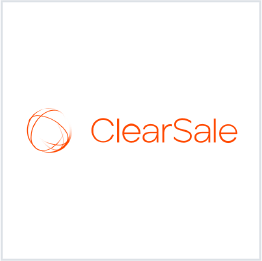
ClearSale
ClearSale is a fraud and chargeback management tool that uses machine learning techniques to approve orders and detect suspicious transactions. ClearSale’s software solution is used by more than 6,000 eCommerce merchants worldwide, and the company offers a $0 chargeback liability guarantee to its SMB customers.
ClearSale offers integrations with many major eCommerce platforms, including Shopify, WooCommerce, Salesforce, Punchmark, BigCommerce, and others. The company complements its SaaS solution with implementation, customization, and anti-fraud consulting services
Pros:
- Flexible pricing models based on performance or KPIs
- Excellent customer support and onboarding process, backed by a 30-day satisfaction guarantee
- Simple and easy-to-understand dashboard
Cons:
- Customers may experience slow order processing
- Chargeback refunds may take a month or longer to process
- Integrations may require occasional tweaks to maintain functionality
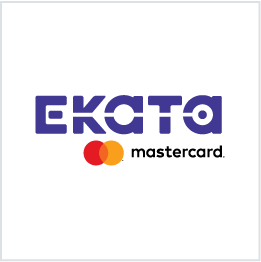
Ekata
Ekata is an identity verification, data validation, and data enrichment provider that is used by more than 2,000 companies around the world. Acquired by payment network Mastercard in June 2021, the company’s solutions help companies combat transaction fraud and mitigate chargebacks.
At the core of Ekata’s platform is its Identity Network, a solution that combines insights from Mastercard Identity with more than a billion behavioral and device data points to create an identity graph of customer profiles. These profiles help Ekata’s customers conduct deeper fraud risk assessments and perform more thorough customer due diligence.
Pros:
- Integrated with Mastercard’s other offerings
- Tailored for financial services firms with KYC/AML obligations
- Exceptional customer identity verification and fraud review capabilities
Cons:
- Expensive and intended for enterprise customers
- Risk scores may not be accurate and may be based off incomplete data profiles
- User interface may be difficult to use
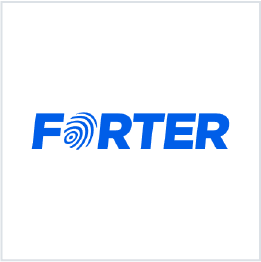
Forter
Forter protects over $50 billion in transactions per year for more than 200,000 eCommerce stores across the world. The company’s platform offers a suite of solutions, including fraud prevention and management, chargeback recovery, abuse prevention, payment optimization, and identity prevention.
The company’s solutions, which can deliver 99% of fraud decisions in under 400 milliseconds, have the potential to reduce chargeback rates by 72% and false declines by 46%.
Pros:
- Automated fraud detection process with manual reviews when necessary
- 100% chargeback coverage for approved purchases
- Developer-friendly API for integration
Cons:
- Limited customization for niches where fraud patterns can be different
- Initial setup can be time-consuming
- Unclear reasons for customer card declines
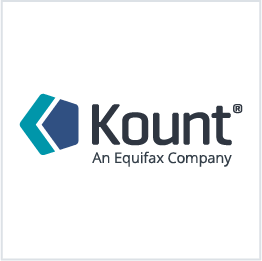
Kount
Founded in 2007 and acquired by Equifax in 2021, Kount is an AI and machine learning-enabled platform that allows businesses to improve the trust and safety of their offerings. The company collects data from more than 20,000 brands in 250 geographical locations across the world to help customers conduct due diligence, detect fraud, and manage chargebacks
The company’s platform offers payments fraud protection, identity management, and compliance solutions for eCommerce merchants, restaurants, healthcare providers, streaming services, rental car companies, and businesses in other verticals.
Pros:
- Fully-customizable and reviewable fraud decisioning rules
- Dedicated account manager and excellent customer service
- User-friendly interface that’s easy to use
Cons:
- Pricing is not publicly available
- Reports of frequent price increases, especially post-Equifax acquisition
- No chargeback reimbursement guarantee for approved transactions
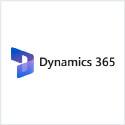
Microsoft Dynamics 365
Microsoft Dynamics 365 is an enterprise resource planning software suite that combines sales, marketing, finance, and operations tools into a single platform. Among its modules is Fraud Protection, an AI-enabled solution that helps eCommerce merchants analyze connected data streams for malicious activity in real-time.
Microsoft Dynamics 365 Fraud Protection can safeguard merchants from a wide range of illicit activities, including account takeover fraud, refund fraud, fake product reviews, reseller fraud, payment fraud, and free trial abuse.
Pros:
- Seamless integration with other Microsoft products, both inside and outside of Dynamics
- Available as both a cloud and an on-premises offering
- Uses adaptive AI technology that improves over time
Cons:
- Complex setup and onboarding process
- No free trial
- Expensive and intended exclusively for enterprise customers
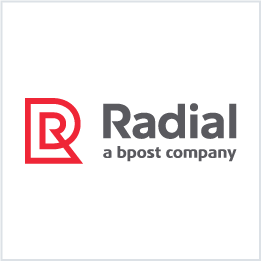
Radial
Radial is a fraud protection and order fulfillment provider that’s tailored for the eCommerce industry. Radial Fraud Zero, the company’s main anti-fraud service, is a fully-outsourced fraud management solution that protects merchants from unauthorized purchases and lowers chargeback risks.
The company’s offering is backed by a $0 liability guarantee for chargebacks arising from approved orders.
Pros:
- Fully-managed, end-to-end fraud protection solution
- Tailor-made for eCommerce providers
- Can be integrated with other services, like order fulfillment and payment processing
Cons:
- Opaque pricing structure
- User interface may be difficult to use
- Difficult to filter data for more precise insights
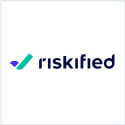
Riskified
Riskified is a fraud monitoring and decisioning platform that analyzes over 480 data attributes to reduce fraud and abuse. The solution is tailored to merchants in a variety of different verticals, including retail, luxury fashion, digital products, travel, and athletics.
The company’s real-time fraud prevention solution uses deep learning, smart linking, and decision optimization techniques trained on over 1 billion past data points to make accurate decisions for merchants at scale.
Pros:
- Optimized for compliance with the EU’s PSD2 regulation
- High true positive and low false negative rate in fraud detection
- Flexible and integrates seamlessly with other eCommerce tools
Cons:
- Steep learning curve for some new users
- Limited insight into the fraud decisioning process
- Prices are high and tend to increase often

Sift
Sift is an AI-powered trust and safety platform that helps eCommerce, fintech, and travel companies reduce account takeover, payment fraud, chargeback fraud, and policy abuse risks.
The company’s payment protection, account defense, dispute management, and content integrity solutions help businesses reduce fraud rates by an average of 2.5%.
The company’s fully-customizable platform has been awarded more than 40 patents and is compliant with the EU’s PSD2 and PSD3 regulations.
Pros:
- Tight integrations with other SaaS tools in the eCommerce industry
- Data is easy to search and provides clear summary information via a Sift Score
- Robust fraud decisioning tool that can correctly resolve edge cases
Cons:
- Initial setup process may be cumbersome
- Occasional downtime, user interface glitches, or technical errors
- Opaque risk scoring methodology
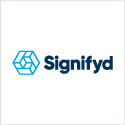
Signifyd
Signifyd is a fraud detection tool for eCommerce merchants that detects unusual activity at each stage of the conversion funnel, from account creation and initial login to checkout and refund request.
Customers who implement the solution usually see a 5% to 9% increase in revenue. And, merchants who use Signifyd are backed by the company’s 100% chargeback reimbursement guarantee. If a purchase approved by Signifyd ends up being fraudulent, the merchant is fully indemnified for the loss.
Pros:
- Platform is easy to use and understand
- Integrates seamlessly with other eCommerce tools, like Magento
- The Payments Optimization module is compliant with EU payments regulations and supports strong customer authentication (SCA)
Cons:
- Custom checkout flows are difficult to implement and require code changes
- Customer transactions that are flagged as fraudulent may take time to manually approve
- Can be expensive; not suitable for all SMBs

TransUnion
TransUnion is one of three consumer credit bureaus in the United States. The company maintains the credit histories of more than 500 million individuals and businesses globally, granting it access to data that can be used to combat fraud at inception.
The company’s fraud prevention, advanced analytics, investigative, customer engagement, and communications solutions equip financial services firms, healthcare companies, and public sector agencies with the tools to prevent and detect fraud.
Pros:
- Full suite of fraud prevention and detection tools for enterprise clients
- Deep insights into consumer and business via extensive credit-related data collection
- Fraud investigation capabilities for companies who need to locate individuals
Cons:
- Strictly an enterprise product; not for SMBs
- Information heavily based on past history rather than predictive insights
- Opaque pricing structure
Optimize Your Online Fraud Detection
Fraud detection is complex. And, even with the right strategy, there’s no guarantee that you’ll see optimal results. Most conventional fraud tools are very limited in terms of their response to first-party fraud, for instance.
Chargebacks911® should be an integral part of any multilayer fraud management system. We work closely with in-house management teams to create a customized integration, along with the most comprehensive, transparent, end-to-end outsourcing option available.
Contact us today to learn more about our solutions and how Chargebacks911 can help optimize your online fraud detection efforts.
FAQs
How is fraud usually detected?
Fraud detection is a series of manual and automated processes aimed at identifying and responding to potential acts of fraud. Fraud detection is usually carried out through automated frameworks like machine learning software, a series of manual review practices, or some combination of the two. The process usually involves fraud detection tools like AVS, geolocation, and 3-D Secure.
What are the types of fraud detection?
Most fraud detection strategies include some form of data gathering and analysis. Specifically, these break down into two separate techniques: statistical analysis and artificial intelligence-based analysis through machine learning.
What is the most common fraud detection method?
Often, your merchant services provider or payment processor will provide built-in options for fraud prevention. These generally consist of pre-loaded software that runs checks on a per-transaction basis.
For more comprehensive fraud protection, you may have to opt-in. Shopify’s Fraud Protect, for example, must be enabled by the merchant.
Should I outsource my fraud detection?
It depends on the specifics of your business.
Third-party fraud detection systems are intended to take the burden of fraud prevention and management from your shoulders in a way that still allows you some agency. However, this isn’t to imply that this is the best method for every merchant. If your company has a higher chargeback ratio, for instance, you may need a more multi-layered strategy than merchants with no chargeback issues.
How Do I find the right fraud solution?
A one-size-fits-all, automated solution will ultimately be ineffective. So, you need to weigh candidates against the specifics of your business. But generally speaking, a hybrid strategy, built on a close working relationship between your internal team and a third-party service provider, will offer the best results.
With a hybrid in-house and outsource solution, you have intimate operational knowledge offered by your internal team. At the same time, you have access to the expansive data and expertise that a professional online fraud detection service brings to the table.
How do you detect fraud transactions?
While there’s no simple, universal way to detect fraudulent transactions, certain tools (velocity checks, Address Verification) can help identify fraud pre-transaction. More comprehensive solutions cast a wider net, pinpointing fraud that happens before, during, or after transactions.
What are the rules in fraud detection?
Fraud detection rules are parameters put in place to help decide the legitimacy of an action. For example, historical buying behavior could be used to identify fraud; a rule might establish exactly how much variance from the norm would trigger a flag.
What do fraud investigators look for?
Fraud investigators typically look at data from a wide range of sources in the hopes of finding correlations or anomalies that could be traced to fraudulent activities.















